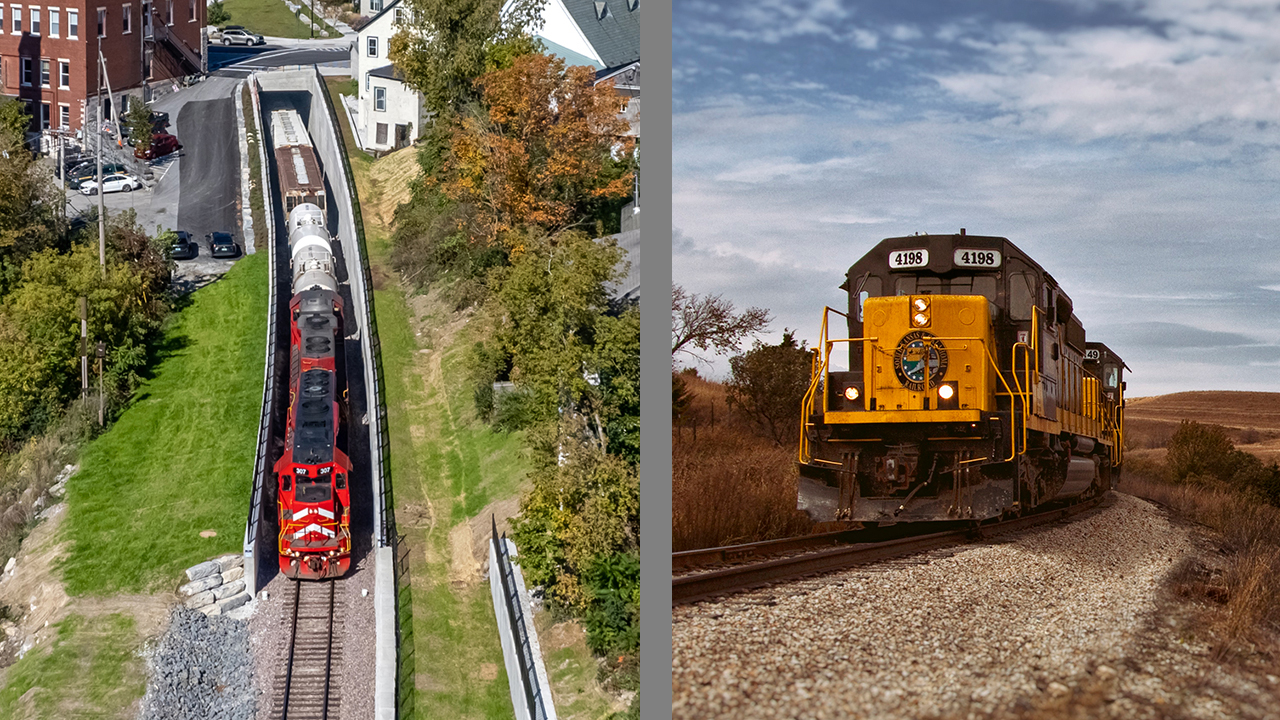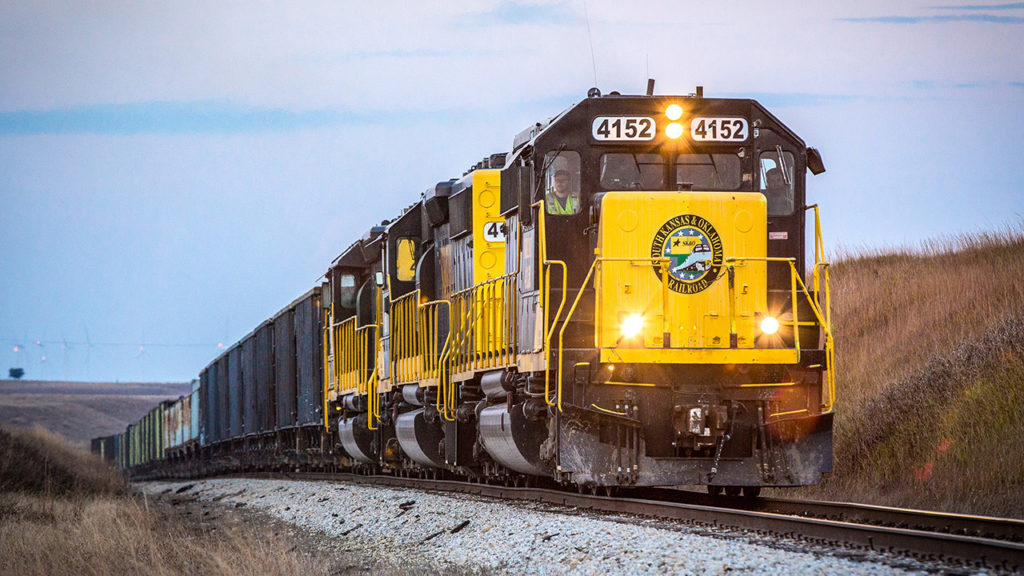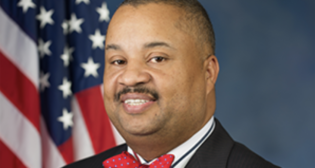
Railway Age 2022 Short Line and Regional Railroads of the Year: VTR, SKOL
Written by Railway Age Staff
Railway Age’s 2022 Short Line of the Year is the Vermont Railway (VTR). Our Regional of the Year is the South Kansas and Oklahoma Railroad (SKOL), a Watco subsidiary.
VERMONT RAILWAY

Part of the Vermont Rail System, Class III Vermont Railway serves its namesake state and adjoining portions of New York and New Hampshire, and also won the Railway Age 2012 Short Line of the Year award. Following is the story of its ambitious main line tunnel reconstruction project, as told by the railroad.
Established in 1964, the Vermont Rail System now operates more than 400 miles of track and hauls in excess of 25,000 freight cars per year, with more than 90% of that traffic serving local business. It employs 150 dedicated railroaders. The company also runs seasonal excursion and dinner trains, and provides complete freight car repair and inspection services from its certified car shop facility in North Walpole, N.H. Over the past 58 years, VTR has embraced change and welcomed opportunity, all while staying true to the mission statement: “Serving America’s Industry With Pride.”
In 2019, VTR embarked on a main line tunnel reconstruction project with the state of Vermont, in conjunction with the town of Middlebury, New England Central Railroad (NECR), lead designer VHB, Kubricky Construction Corp., and Engineers Construction Inc., as well as numerous other parties.
The two Middlebury bridges, often referred to as tunnels, were built in the 1920s. They not only provided access over the railroad tracks and a 20-foot-deep rail corridor, but also ran through and tied together the National Register-listed Middlebury historic downtown business district. However, they had become structurally deficient, threatening safety for vehicles, bicyclists and pedestrians above, and the operation of the railroad below. The corridor had been plagued by drainage issues that resulted in continued speed restrictions along with vertical and horizontal clearance limitations.
The Middlebury tunnel project put the VTR main line out of service for 10 weeks during construction, which included severing and rebuilding 3,500 linear feet of railroad track, crossties and ballast; excavating tens of thousands of cubic yards of soil and bedrock; constructing a new drainage system by microtunneling through solid rock 30 feet below grade; assembling 422 individual pieces of precast concrete fabricated in New York; and reconstructing both Main Street and Merchants Row, including new sidewalks and lighting. For close to a year prior to the shutdown, VTR had to adjust its daily train operations to accommodate tight 20-hour work windows and to minimize impacts on customers. To guarantee rail customers uninterrupted service during the shutdown—a priority for VTR—all rail traffic through Middlebury was diverted onto an alternate NECR route that ran on the opposite side of the state.
VTR, working closely with the Vermont Agency of Transportation (VTrans) and NECR, established a plan for two detour trains each day. The trains were powered by eight GMTX GP-38-2s leased by VTR and operated over NECR from Burlington to Bellows Falls, Vt.; additional train crews were also brought in, and trained and qualified on both railroads. In some cases, partial off-loading or complete transloading of product from railcar to truck was required at VTR’s Riverside Reload Center in Bellows Falls, before cars could be accepted onto the detour route.
VTR had one important goal: No direct impact to customers. Thanks to years of planning and strong VTR-NECR communication—and despite the pandemic—there were no customer complaints, according to VTR President Selden Houghton.
While work continued in and around the tunnel until spring 2021, the rail line through Middlebury officially reopened on Sept. 18, 2020.
The project was a success for VTrans, Middlebury, and VTR and its customers. Houghton reports that the state-of-the-art infrastructure not only accommodates the “high and wide” shipments of tomorrow—vertical clearance was increased by more than three feet by excavating downward—but also significantly enhances a historic Vermont town—maintaining the existing roadway profiles and avoiding impacts to the adjoining sidewalks and historic buildings.
The completion of this project also helps pave the way for Amtrak’s long-awaited service extension into Burlington later this year. Vermont Rail System currently hosts the Ethan Allen Express from New York City into Rutland, Vt., and is pleased to support the state of Vermont in its efforts to expand this service to the “Queen City.”
VTR’s Houghton credits the teamwork of all parties involved in the project, saying a focus on quality customer service and “coming together for the common good” was key to managing project complexity and pandemic-related challenges. “The team members both in and outside of Vermont Rail System were instrumental in making this project a success,” he said.
SOUTH KANSAS & OKLAHOMA

Class II South Kansas & Oklahoma—also selected as the Railway Age 2008 Regional of the Year—shares how partnerships and customer-centricity have led to its success.
The 433-mile SKOL runs through southeastern Kansas and northeastern Oklahoma, and serves 81 rail customers at 94 locations. It transports mineral, chemical, agricultural and industrial products. Volumes exceed 60,000 carloads per year.
Southeast Kansas is known for its rich mineral deposits, including coal, zinc, lead and calcite. Calcite is the primary component of limestone, which is used in the production of cement—SKOL’s largest commodity. Grain is SKOL’s second-largest commodity with crops of corn, wheat and soybeans growing in southeast Kansas.
SKOL customers were in dire need of increasing their carload weights to the industry standard 286K. To accommodate such heavier carloads, SKOL sought a CRISI Program grant to improve rail infrastructure. It enlisted help from the Watco corporate team and sponsorship from the Kansas and Oklahoma departments of transportation to submit a request.
In 2020, the Federal Railroad Administration awarded SKOL $27 million to upgrade track; replace rail, ties and ballast; and repair bridges and crossings, so 80% of the railroad, or more than 300 miles of track, could be brought up to 286K standards. The total capital project value, with matches from the railroad and the states of Kansas and Oklahoma, was $41 million. Despite the pandemic—with a shortage of labor and materials and a disrupted supply chain—work began in 2021 and completion is slated for the end of this year.
The upgraded transit times for most trains will be cut by half, and train speeds will increase from 10 mph to 25 mph on much of the upgraded track. Due in part to these improvements, Watco customer Bartlett Grain chose to build a $350 million soybean crushing facility along the line in Kansas. When it opens at the end of 2023, 6,000 annual carloads of grain will be added to SKOL to feed the new plant. Watco also anticipates an additional 1,500 carloads of soybean oil and biodiesel to be generated in conjunction with the crushing facility. To handle this new traffic, SKOL is projected to spend an additional $46 million to upgrade the remainder of the railroad to 286K.
Customer-focused, SKOL teamed with BNSF in May 2020 to provide unit train service for longtime fertilizer customer Coffeyville Resources. The SKOL team moves fertilizer from Coffeyville to Columbus, Kans., to interchange with BNSF for continuation to Nebraska, an important market for Coffeyville Resources, whose product is used on the corn grown there. To help facilitate efficient service, SKOL uses BNSF locomotives; trains are staged in Columbus and ready for the Class I railroad crew. Since the project began, the regional railroad has moved seven unit trains of 90 cars per train.
Only weeks after the unit train service was under way, a fire damaged a 505-foot-long wooden trestle bridge in southeast Kansas, interrupting cement, rock and sand traffic, as well as grain product moves to the Port of Catoosa. SKOL again partnered with BNSF, and within days, had an agreement in place to keep cars moving.
SKOL customer Cornejo Materials in Kansas has a sand plant in Oxford, a quarry in Moline, and a stone yard in Wichita. It told the regional that the communication during the bridge outage was excellent and crucial for staffing.
Another customer, Ash Grove Cement, noted that SKOL helped find alternate carriers and handled billing for all parties. “Our customers never missed a beat,” says Mark Kreiser, Manager of Logistics and Marketing Services-Central Region. “It was an unfortunate incident, but the Watco team did a great job of communicating and worked with us throughout the whole process, and we couldn’t have asked for more cooperation from them than what they provided. A class act, and they went above and beyond to provide world-class customer service during a difficult time.”
The bridge repair, originally estimated to take 30 days, took only 16. The ability to make up so much time and pass that along to customers was due to detailed planning, daily briefings and debriefings; well-coordinated delivery of vast quantities of treated bridge timber; and seamless cooperation among multiple contractors, including two major bridge companies that performed safely as one team.
“The Watco/SKOL team is all about getting it done,” says Cornejo Vice President of Aggregate Sales Chris Blasdel. “When presented a challenge, they have always responded with a solution.”



